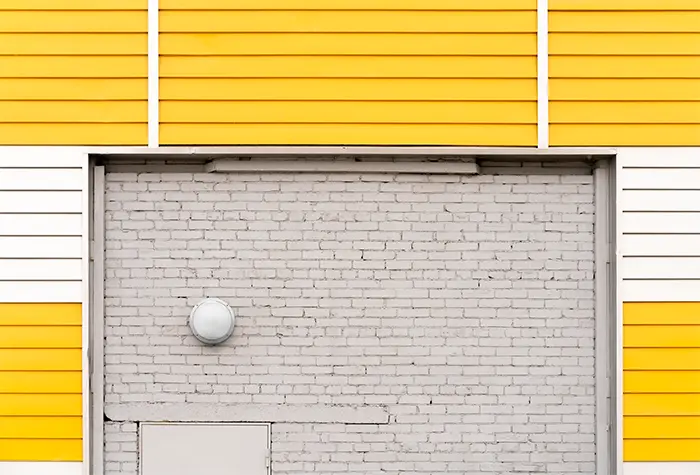Exterior wall repairs are an imperative part of home maintenance. Exterior walls are the first line of defense for your home or building against the elements. They protect against wind, rain, snow, and other environmental factors. Over time, exterior walls can develop damage due to wear and tear, weather, and other factors. If left untreated, this damage can lead to more significant problems, such as water damage, structural issues, and increased energy costs.
Common Exterior Wall Damage
- Cracks: These can be caused by foundation settlement, temperature fluctuations, or poor construction.
- Spalling: This occurs when the surface of the wall deteriorates and flakes off.
- Efflorescence: This is a white, powdery substance that forms on the surface of the wall due to salt deposits.
- Water penetration: This can lead to mold, rot, and structural damage.
Exterior Wall Repair Methods
The appropriate repair method will depend on the type of damage and the material of the wall. The types of exterior wall repair services depend on who you consult for your contracting needs. Some common methods include:
Patching and Repairing:
Exterior wall repair services include patching and repairing involves addressing minor or moderate damage to the exterior walls of a building. This can include cracks, spalling, or other defects that compromise the wall’s structural integrity or appearance. Common methods for patching and repairing exterior walls include caulking small cracks, applying patching compound to larger holes, repairing damaged stucco, and replacing damaged mortar in masonry walls. It’s important to address exterior wall damage promptly to prevent further deterioration and potential structural issues. If you’re unsure about the best course of action, consulting with a professional contractor is recommended.
Here are the types of cracks and the repairs for them:
- Small cracks: Caulk or patching compound can be used to fill small cracks.
- Larger cracks: For larger cracks, a wider patch may be necessary, involving removing the damaged section and replacing it with new material.
Repointing:
Exterior wall repointing is a process of repairing or replacing the mortar between the bricks or stones of a masonry wall. Over time, mortar can deteriorate due to weathering, exposure to moisture, or freeze-thaw cycles. When mortar becomes damaged or cracked, it can allow water to penetrate the wall, leading to structural damage, efflorescence, or other problems. Repointing involves removing and replacing the damaged mortar with a fresh mixture that matches the original color and texture. This process helps to restore the wall’s appearance and protect it from further deterioration. Repointing is often a necessary part of maintaining the structural integrity and aesthetic appeal of older masonry buildings.
This exterior wall repair service involves replacing the mortar between the bricks or stones of a masonry wall. It is often necessary to repair cracks or prevent water penetration.
Stucco Repair:
Exterior wall stucco repair involves addressing damage to the stucco finish on a building’s exterior. Stucco can deteriorate over time due to factors such as weathering, moisture penetration, or poor-quality materials. Common types of stucco damage include cracking, spalling, efflorescence, or discoloration. Repairing stucco involves removing the damaged section, applying a new coat of stucco, and blending it with the existing surface. It’s important to choose the right type of stucco for repair and to follow proper application techniques to ensure a durable and aesthetically pleasing finish. Stucco repair can be a complex task, and hiring a professional contractor is often recommended to ensure the job is done correctly.
Damaged stucco can be repaired by patching the affected area and applying a new coat of stucco.
Painting:
Exterior wall painting is a process of applying a protective coating to the exterior walls of a building. It serves both aesthetic and functional purposes, enhancing the building’s appearance and protecting it from the elements. Exterior paints are formulated to withstand harsh weather conditions, including rain, wind, and sunlight. They also provide a barrier against moisture penetration, which can lead to mold, rot, and structural damage. When choosing an exterior paint, it’s important to consider factors such as the building’s material (e.g., wood, brick, stucco), the climate, and the desired finish. Proper surface preparation, including cleaning, priming, and filling any cracks or holes, is essential for a successful paint job. Regular maintenance, such as cleaning and repainting as needed, can help to prolong the life of the exterior paint and maintain the building’s appearance.
A fresh coat of paint can help protect the wall from the elements and improve its appearance.
Replacement:
Exterior wall replacement is a major renovation project that involves removing and replacing the entire exterior walls of a building. This can be necessary due to severe structural damage, outdated materials, or a desire to improve energy efficiency. The process typically involves demolishing the existing walls, constructing new walls using appropriate materials, and installing insulation, siding, and other finishes. Replacing exterior walls can be a complex and costly undertaking, requiring extensive planning and coordination. It’s important to hire experienced professionals with expertise in demolition, construction, and building codes to ensure the project is carried out safely and efficiently. The decision to replace exterior walls should be based on a thorough assessment of the building’s condition and the potential benefits of the renovation.
In severe cases of damage, it may be necessary to replace the entire wall.
Cost of Exterior Wall Repair
Exterior wall repair cost will vary depending on the extent of the damage, the size of the wall, the materials used, and the location. It is important to obtain quotes from multiple contractors to ensure you are getting a fair price.
If you’re looking for an estimate then repair costs can run anywhere from $10 to $1500, depending on the extent of the damage and the materials involved. The most easiest way to know how much your exterior wall repair job will cost is to call the Mudjacking Contractors and have them give you a FREE estimate. This way, not only will you get a good idea of how much this is going to cost, but you’ll also have industry professionals come and assess the damage for you!
The Need for Professional Contractors
While some minor repairs can be done by homeowners, it is generally recommended to hire a professional contractor for larger or more complex projects. Contractors have the experience and expertise to properly diagnose the problem, select the appropriate repair method, and ensure the job is done correctly.
There is also a huge difference in exterior wall repair cost depending on which company you ask to help you fix your exterior walls.
Key benefits of hiring a professional contractor:
- Expertise: Contractors have the knowledge and skills to identify and address various types of wall damage.
- Quality: They can ensure that the repairs are done to a high standard, using appropriate materials and techniques.
- Efficiency: Contractors can complete the job efficiently, minimizing disruption to your home or business.
- Warranty: Many contractors offer warranties on their work, providing peace of mind in case of any issues.
By addressing exterior wall damage promptly, you can help protect your property from further deterioration and maintain its value. If you are unsure about the best course of action, consulting with a professional contractor is a wise investment.
Exterior Wall Repair: Final Thoughts:
Professional mudjacking contractors are essential for exterior wall repair due to their expertise and specialized equipment. They have the knowledge and experience to accurately assess the extent of damage and select the most appropriate repair methods. Mudjacking, a process that involves injecting a hydraulic cement mixture beneath the foundation, is a highly effective technique for leveling uneven floors and correcting foundation problems. By hiring a professional mudjacking contractor, homeowners can ensure that their exterior walls are repaired properly, preventing further damage and maintaining the structural integrity of their property.
Call us today at (347) 284-0280 or visit mudjackingcontractor.com to learn more.
FAQs
1. How Do You Fix a Broken Outside Wall?
To fix a broken outside wall, you’ll need to assess the damage and choose the appropriate repair method. For small cracks, caulk or patching compound can be used. For larger cracks or holes, you might need to replace the damaged section with new material. If the wall is severely damaged, you may need to consult a professional for a complete rebuild.
2. Is It Expensive to Fix a Wall?
The cost of fixing a wall depends on the extent of the damage, the materials needed, and whether you do the repairs yourself or hire a professional. Minor repairs can be relatively inexpensive, while major damage may require significant costs.
3. How Do You Permanently Fix Cracked Walls?
Permanently fixing cracked walls depends on the cause of the cracks. If the cracks are due to settling, you might need to address the foundation. For minor cracks, caulk or patching compound can be used. If the cracks are due to structural issues, you may need to consult a professional for a more extensive repair.
4. How Much Is Wall Replacement?
The cost of wall replacement varies depending on the size of the wall, the materials used, and whether you do the work yourself or hire a professional. Generally, replacing a wall can be a significant expense, especially for large or complex structures.
5. What Material Is Used to Repair Walls?
The material used to repair walls depends on the type of wall and the extent of the damage. Common materials include drywall, plaster, wood, brick, and concrete. For minor cracks or holes, caulk or patching compound can be used. For larger repairs, you may need to replace damaged sections with new material.
6. What Is the Best Filler for Exterior Cracks?
The best filler for exterior cracks depends on the size and type of the crack, as well as the climate. For small cracks, a high-quality caulk is often suitable. For larger cracks, a patching compound or mortar may be necessary. It’s important to choose a filler that is durable, weather-resistant, and compatible with the existing material of the wall.
7. What Is Used to Repair Cracks in Walls?
The material used to repair cracks in walls depends on the size and type of the crack, as well as the existing material of the wall. Common materials include caulk, patching compound, mortar, and drywall. For minor cracks, caulk or patching compound is often suitable. For larger cracks, mortar or drywall may be necessary.
8. Can You Paint Over Exterior Fillers?
Yes, you can usually paint over exterior fillers once they are dry and cured. However, it’s important to use a primer designed for the specific filler and paint to ensure proper adhesion and durability.
9. What Is Masonry Filler?
Masonry filler is a material used to repair cracks or holes in masonry structures, such as brick or stone walls. It is typically a cement-based product that is mixed with water and applied to the damaged area. Masonry filler is designed to be durable and weather-resistant, making it a suitable choice for exterior repairs.
10. Is Filler Same as Cement?
No, filler and cement are not the same. Filler is a material used to fill gaps or cracks, while cement is a binding agent used to create concrete or mortar. While both can be used for repairs, they have different properties and applications.

